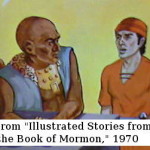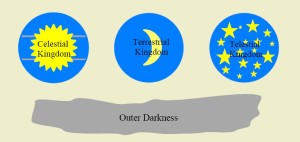Related Posts: Adam-God Theory; Opposition in all things; The Fall of Man Part II; Adam-ondi-Ahman and Eden; Doctrine of Agency
According to Mormon beliefs the fall of man was a necessary part of God’s plan for the happiness of his children (Alma 42:8; Moses 6:48; 2 Nephi 2:23; 2:25; 1 Nephi 17:36). Understanding why the fall was necessary begins by understanding the premortal life. From there the necessity of the fall becomes apparent.
We believe that each person had a premortal existence; we lived before the creation of the earth (Ether 3:15; Abr. 3:22; Jer. 1:5; Eph. 1:4). During premortality we learned and progressed. But eventually we reached the limits of premortal development, so it became necessary for us to move to the next stage of existence, mortality. President Joseph F. Smith (d. 1918) explained it in this way:
Our spirits existed before they came to this world. They were in the councils of the heavens before the foundations of the earth were laid…We sang together with the heavenly hosts for joy when the foundations of the earth were laid, and when the plan of our existence upon this earth and redemption were mapped out…[It was there that] Satan rebelled against God, and sought to destroy the agency of man… (Teachings of Presidents of the Church: Joseph F. Smith, p. 331)

